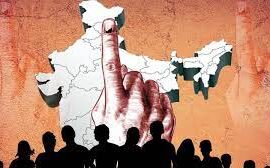Volkswagen Polo 2010-2022: Goodbye until we meet again? | Fast Track | Auto News
[ad_1]
The Polo can be safely termed as the bread and butter of Volkswagen in India. Every activity of Volkswagen in India was based on the Polo. Even though it had models like the super-luxurious Phaeton, the Passat, the Jetta and the Vento in the market, the Polo has been the star player. When one looks at the global sales figures of the Polo, the Volkswagen did not manage to sell much in India — 2.5 lakh units in 12 years. And this is next to nothing for a car that has sold more than 1.2 crore in global markets. However, for the few hardcore Volkswagen fans in India, it is a big number. Besides, despite several models making their entries and exits during this time, the Polo is still an active presence in the Volkswagen lineup in the country.

Will it reappear?
Though the Polo has been available in the Indian market for the past 12 years, the age is yet to show on the premium hatchback. A timeless design, a minor facelift could have easily extended its life to another 12 years or so. But Volkswagen has decided to discontinue its production in India. But the German carmaker is yet to announce a replacement for it. The new Polo that was launched two years ago in the international market is yet to make its way into India. Though Volkswagen has remained non-committal, according to reports, the next-gen Polo is under consideration for an India launch sometime in 2023.

Built on the outdated PQ platform, less than a thousand units of the Vento and the Polo are produced in a month. The difficulty in sustaining a production line with such low numbers and the need to increase the production of better selling models like the Taigun may have forced Volkswagen’s hand. The Polo production line would be taken over by the upcoming global sedan Virtus. And the company may take a call on launching a new model of the Polo by the end of the year.
Isn’t this a Skoda?
The year was 2010. And the occasion was the inauguration of the production facility of Volkswagen at Chakan in Pune. Putting a full stop to imports, the first made in India Volkswagen car was supposed to be rolled out from the facility. Instead, what came out before the waiting journalists was a Skoda Fabia. It underlined the fact that both Audi and Skoda were Volkswagen. And soon followed a Polo.

Re-badged Audi
The first-generation Polo was a rebadged version of the Audi 50. It was also called Volkswagen Derby. Though the Polo was essentially Audi 50, its price tag was lower and was sold as the base model of the Audi 50. Three years down the line, people lost interest in it and production was confined to only the Polo. Meanwhile, in four years, five lakh Polos were sold across the world. In 1977, the Polo appeared in its sedan form, called Derby. In 1979, the Polo got a facelift with minor changes to headlamps and dashboard.

From Mark II to IV
On the lines of the names of the Ambassador, older models of the Polo were called Mark I, II and III. The second-generation Polo was launch in 1981 as Mark II, when it grew in size too. Apart from Germany, the company expanded the production of the car to several other countries in Europe. In two years, about 10 lakh units of the car were made, and the Polo surged in popularity among people. In another year, production went up to 20 lakh. Though the Derby was launched in between, the Polo remained the best seller. The car underwent some changes in 1990. Though the Polo was known for its affordable price tag, it also had performance models.

The third generation Polo came in 1994 and the fourth generation in 2002. By this time, it became a strong and modern hatchback. Besides, Volkswagen started manufacturing it in South America, Africa and China. China later became a global production hub.

Indian entry
The Polo that came to India was the fifth-generation model, which was internally designated as Type 6R. It was unveiled at the 2009 Geneva Motor Show and went into production in 2010. It had names such as Audi A1 and Seat Ibiza in some markets. The Vento and Ameo arrived later as its sedan versions. Among this, the Ameo was made for India. The Polo when it arrived in India in March 2010 had a 1.2-litre petrol and 1.2-litre turbo diesel engines. It also got a 1.6 engine in the same year.

The Vento
Later, the Vento appeared as the bigger sibling, but the Polo continued to be the star for Volkswagen. In fact, the Vento turned out to be just a support act. Though the classic exterior design of the Polo remained unchanged over the years, engines and transmissions changed several times. In 2013, instead of the 1.6-litre petrol, it got a modern 1.2-litre turbo petrol engine and dual-clutch automatic transmission. Badged as GT TSI, it was the most sought-after Polo model in India. Though the Polo also got the 1.6-litre diesel engine from the Vento, the GT TDI did not do well as its petrol sibling.

Rs30 lakh 3-door GTI
In July 2014, the 1.5 TDI replaced both the 1.2 and the 1.6 TDI diesel engines. The 1.5 TDI came in two tunes — 90 bhp and 105 bhp. The imported three-door GTI model had an ex-showroom price tag of Rs 26 lakh. Though it did not gain much traction in India, it helped the company add more allure to the Polo.

BS6 hurdle
Like other carmakers, Volkswagen also slipped when the stricter BS6 pollution norms were implemented. It dumped its diesel engines and introduced a 1.0-litre, three-cylinder petrol engine. Though it is an excellent engine, the loss of growl of the TDI and torque disappointed auto lovers. The company has confirmed that it won’t bring in a new diesel engine.

New launches
Since sedans are losing their appeal and other carmakers are getting stronger in the hatchback segment, Volkswagen now plans to focus more on its mini SUV Taigun. The company, like other manufacturers, has understood that the mini SUV segment has the most potential to grow in the country. The company will take a call on relaunching Polo only after the launch of its upcoming sedan, the Virtus.

Polo Cup
The Polo brand name grew through motor sport. The move to organise races from 2010 with the participation of international drivers gave a grand image to the Polo in the country. I had the opportunity to experience the power of the Polo, including at the Buddh International Circuit, as an invitee to several Polo Cup championships. So, it goes without saying that the Polo will remain an iconic car. Even after its production stops, the significance of the Polo won’t diminish. The car that had many models and engine options will remain a hot favourite as collectibles. And, the older it grows, the more valued it becomes.

[ad_2]
Source link










